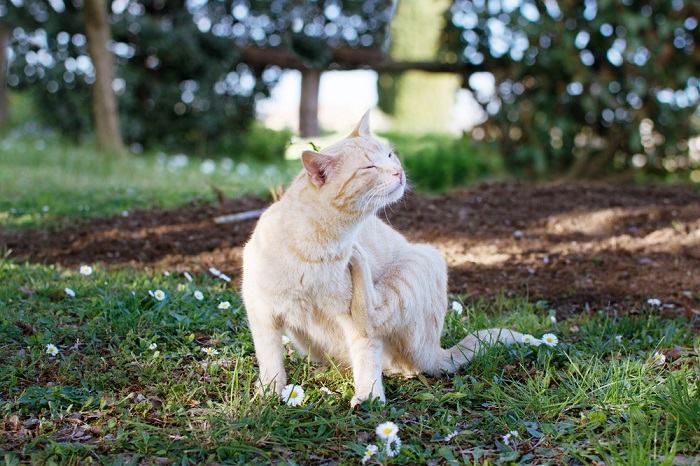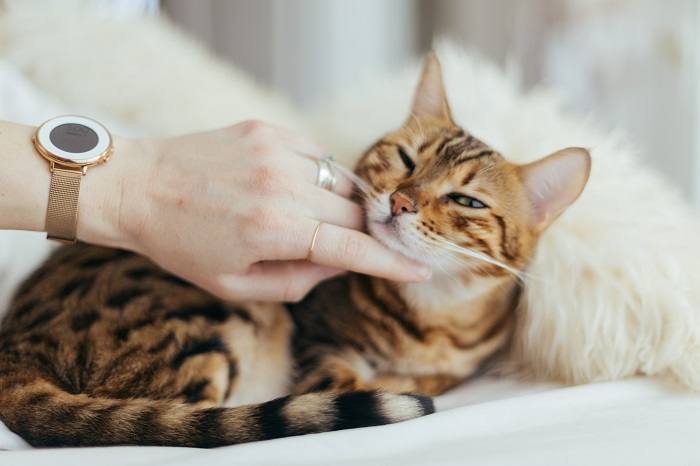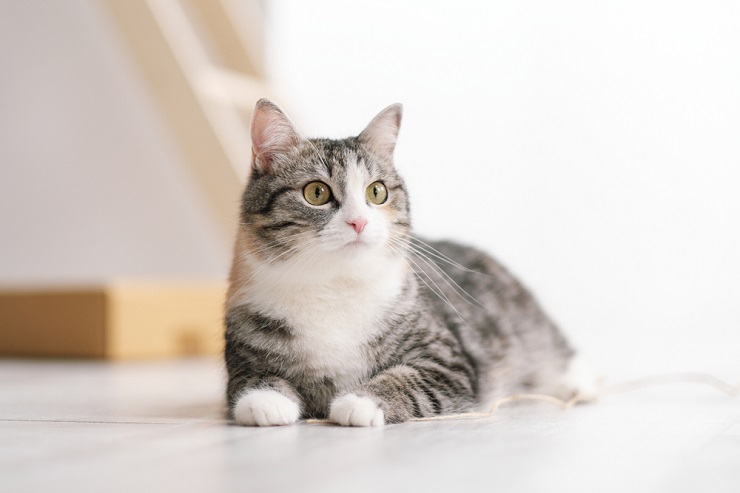
Feline behavior is nothing like human behavior, so sometimes it’s hard to tell whether their wonderful but slightly wacky ways are normal. Of course, an important part of being a pet parent is spotting signs that something is wrong and seeking the appropriate medical advice.
Cat head bobbing refers to nodding, shaking, or tremoring of the head. Occasional head bobbing can be normal, but there are other instances when it could be the symptom of a medical problem. A wide variety of health concerns could theoretically cause head bobbing, from ear problems to issues with the brain.Key Takeaways
So, how do you know whether your cat’s behavior is normal, or if you need to make a call to the veterinary clinic? Let’s look at cat head bobbing as an example.
What Is Head Bobbing?
Cat head bobbing refers to nodding, shaking, or tremoring of the head. It might be a fast or slow movement, and sudden, intermittent or continuous, depending on the cause.
Why Do Cats Bob Their Heads?
If you notice your cat bobbing their head, it could be normal. However, it could also be a sign of an underlying health condition. Here are some reasons why your cat might bob their head:
1. They’re Tired
Have you ever been on a long bus journey and felt yourself nodding off to sleep? Or perhaps you’ve tried to stay up to watch the end of your favorite TV show, but your body starts saying it’s time for bed? It can be hard to fight that feeling of tiredness, even when you want to.
This can lead to tiny microsleeps or head nodding where you keep dozing off. This isn’t just human behavior. Sometimes cats nod their head when they’re tired too.
Also Read: Lethargy in Cats: Causes, Signs, Symptoms & Treatment
2. They’re Grooming
You might have noticed that when your cat is grooming those hard-to-reach areas on their neck just below their chin, they do an exaggerated bob of their head. This is so they can reach as high on their neck as possible with their tongue. It might look a little silly, but it really is the best way, and cats take cleanliness very seriously!
Also Read: Best Cat Grooming And Deshedding Gloves
3. They’re Ready To Pounce
If your cat likes to stalk insects, toys, or other even your foot, you might notice they bob their head a little just before they pounce on their prey. This is usually a side-to-side shake and is accompanied by a cute little bum wiggle!
Also Read: 8 Purrfect Games You Can Play With Your Cat
4. They Have a Health Issue

Sometimes, head bobbing is a sign of a medical issue.
Sadly, head bobbing isn’t always a normal behavior in cats. It can indicate a problem, especially if it’s a new behavior. There are a wide variety of health issues that could theoretically cause this behavior, from ear problems to issues with the brain.
Health Issues That Can Cause Head Bobbing in Cats
1. Conditions Affecting the Ears
Cats can get ear infections, as well as polyps and other growths within the ear canal. Along with ear mites, these conditions can cause irritation and pain, leading to head shaking. They might also affect your cat’s balance, with might mean your cat moves their head strangely as they are wobblier and more uncertain.
If the condition affects the deeper structures of the ear or the connection with the brain, it can also cause a head tilt and affect the nerve supply to the face. So, you might notice a change in the shape of your cat’s pupils, or that their face looks a bit wonky.
Also Read: Ear Discharge In Cats: Causes, Symptoms, & Treatment
2. Skin Irritation
Fleas, allergies, bacterial infections, and other causes of skin inflammation can cause itchiness. This can mean that your cat seems to twitch or jerk their head because they suddenly feel an itch. Watch out for raw, red, scabby, or oozy skin, and bald patches. You should also look closely to see if there are any creepy crawly critters or little black specks of flea dirt.
Also Read: Why Is My Cat Itching And Scratching?
3. Disorders Affecting the Brain

Neurological problems may result in odd head movements, including bobbing.
Lots of different health conditions affect the brain. Some are neurological disorders within the brain itself, including tumors, abnormal brain development, head trauma, vestibular disease, or strokes.
Others aren’t limited to the brain itself but affect the brain, like liver and kidney disease, high blood pressure, certain toxins, parasites, and viral infections. In all cases, you might notice neurological signs like a head tilt, disorientation, seizures, abnormal eye movement, and a change in personality or behavior.
However, if there is a secondary cause you might also notice other symptoms like increased thirst, reduced appetite, vomiting, or diarrhea.
Also Read: Bacterial Infections In Cats: Causes, Symptoms, & Treatment
4. Dental Disease
Bad teeth can cause your cat pain and discomfort, which might make them throw their head around a bit, especially when they’re eating. You might also find they dribble more, eat less, paw at their face, and are plagued by an unpleasant smell that follows them around. Of course, it’s not your poor cat’s fault—the smell is just a sign of the infection in their mouth.
Also Read: Best Dental Cat Treats
5. Nausea
If your cat is feeling a bit queasy, they might dribble more. If you’ve ever had severe heartburn or nausea, you can probably relate! When the saliva is flowing, they might whip their head from side to side to shake the dribble away. You might also notice them gulping a lot and they probably won’t be very interested in food.
Also Read: Famotidine For Cats: Overview, Dosage & Side Effects
6. Seizures
A seizure is a horrible thing to go through and can also be traumatic for anyone who witnesses it. If your cat seizures, their muscles may tense and relax repeatedly, causing their head to bob, their limbs to paddle, and their whole body to shake or tremor.
Even once the seizure has stopped you might notice your cat continues to act oddly, and its head may tremor for a little while.
7. Blindness
Cats rely on all of their senses to move around and make sense of their environment and surroundings. If they go suddenly blind, they’ll understandably be more tentative when moving around, to avoid bumping into things.
This can lead to an intentional tremor of the head, where the head shakes. Although this head movement can be normal for a blind cat, if your cat seems to be losing their sight suddenly, you should schedule a visit with your vet.
Also Read: Understanding Your Cat’s Five Senses
8. Pain of the Face or Mouth
If your cat has an injury or pain in their mouth or face, they might move their head around because they are uncomfortable. Sometimes, the cause is obvious. For example, they might have bad teeth, an ulcer, or a wound.
However, more rarely cats can get pain or irritation in their face or mouth due to feline orofacial pain syndrome, or hyperesthesia. These conditions are poorly understood but might be caused by abnormal nerve stimulation. If your cat is suffering from facial or oral pain, you might notice scratches on their face or see them pawing at their mouth a lot.
Also Read: What Can You Give A Cat For Pain? 6 Vet-Recommended Options
When Should You See a Vet About Your Cat’s Head Bobbing?
It’s really important to get your cat checked over by a veterinarian if their behavior changes in any way. So, if your cat never used to bob their head, but now they seem to do it a lot, there’s likely a reason behind it.
This is especially true if they are showing other symptoms aside from head bobbing. Your veterinarian will be able to check their ears, give them a physical, and do a neurological exam to find out what’s going on.
Also Read: Cat Bloodwork (Different Types of Tests, Health Conditions And Costs)
In Summary

Although occasional head bobbing can be normal and no cause for concern, there are other instances when it could be the symptom of a medical problem.
There are certain situations where cat head bobbing is normal. It might even be a habit. However, it can also be a sign of illness. If you’re unsure whether your cat’s head bobbing is normal, ask your vet for advice.
Also Read: Why Isn’t My Cat Affectionate?
Frequently Asked Questions
Why does my cat bob his head at me?
If a cat regularly bobs their head and always has done so, there’s probably nothing to worry about. It could be that they’re tired and fighting sleep. However, if it’s a new behavior, they seem unwell, or they have other symptoms, it’s a good idea to take them to see the vet.
Why do cats push their heads into you?
Cat head butting is known as "bunting" and is a form of greeting and a way of showing affection in the cat world. Cats have scent glands dotted around their face, so when they nudge their head into you, they’re also spreading their pheromones to mark you as safe and familiar. They might even be marking their territory and claiming you as their possession!
Should I head butt my cat back?
Bunting or head butting in cats is a loving behavior, so it’s absolutely a good idea to head butt them back. Of course, it goes without saying that when you head butt them you should gently press your forehead against theirs. Anything more forceful is considered aggressive, whether you’re a cat or a human!







